We put the Samsung Galaxy S22 Ultra (Exynos) through our rigorous DXOMARK Selfie test suite to measure its performance in photo and video from an end-user perspective. This article breaks down how the device fared in a variety of tests and several common use cases and is intended to highlight the most important results of our testing with an extract of the captured data.
Overview
Key front camera specifications:
- 40MP 1/2.82″ sensor
- f/2.2 aperture
- 26mm equivalent focal length
- PDAF
- 4K at 30/60 fps, 1080p at 30fps
Scoring
Sub-scores and attributes included in the calculations of the global score.
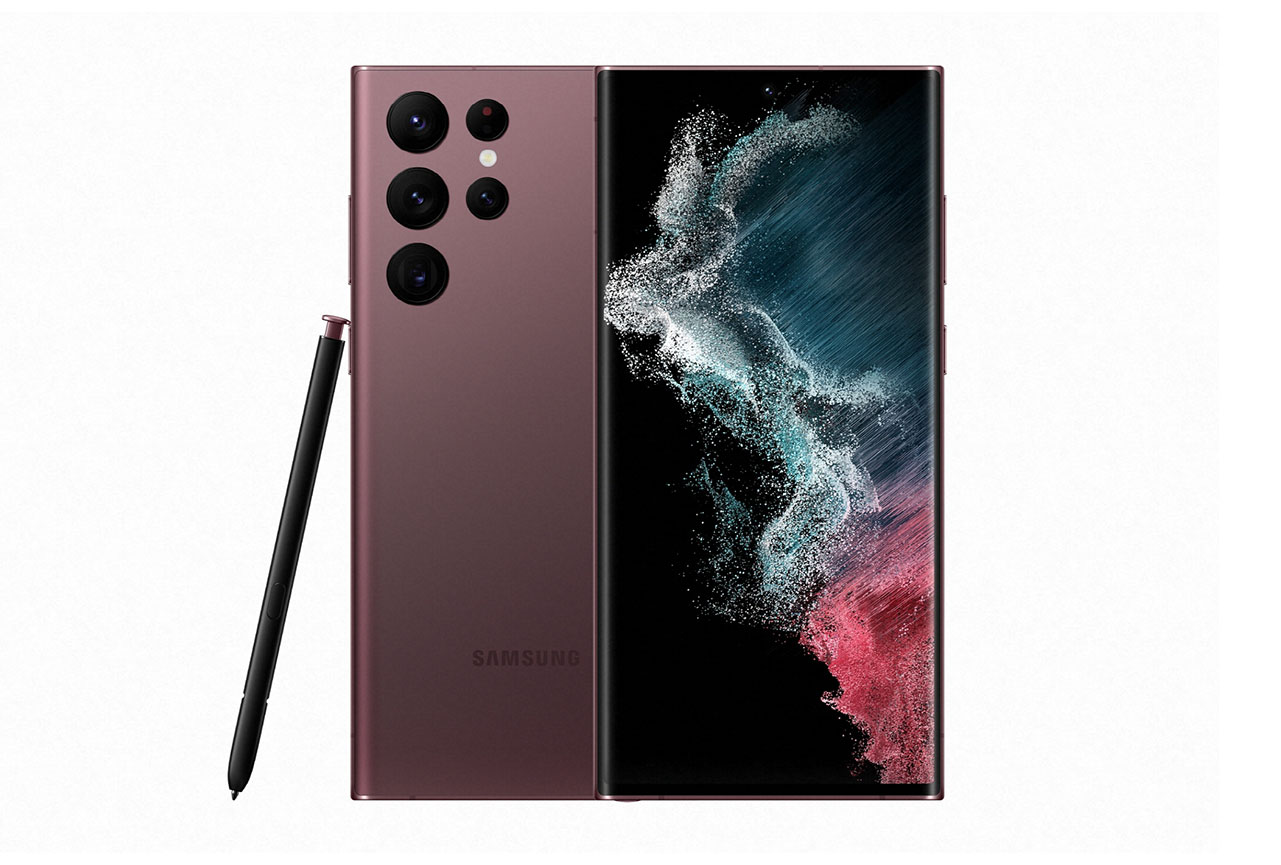
Samsung Galaxy S22 Ultra (Exynos)


 24th
24th
 19th
19th
Pros
- Good exposure and wide dynamic range in photo and video
- Accurate white balance and nice color
- Fast and repeatable autofocus
- Nice bokeh effect with accurate depth estimation
- Nice color and skin tones in video
- High levels of detail in video
Cons
- High levels of image noise
- Slightly limited depth of field
- Ghosting, halo and ringing artifacts
- Occasional autofocus instabilities in video
- Camera shake while walking when recording video
The Samsung Galaxy S22 Ultra (Exynos) is among the best phones we have tested for selfie shooting and improves slightly over its predecessor S21 Ultra 5G (Exynos). Improvements are most noticeable in terms of depth of field and texture as well as video. On the downside, noise levels are higher than on the previous model and video stabilization is less effective.
When shooting still images, the camera handles exposure well, capturing good target exposure on portraits and a wide dynamic range in high-contrast scenes. Colors are nice, with neutral white balance and natural skin tones. However, noise levels are high in all conditions, especially in brighter outdoor light where we can see luminance noise on backgrounds and in shadow areas. The autofocus is quite fast and repeatable, but depth of field is a little limited, which can result in blurry background subjects in group selfies. Our testers also observed some image artifacts, including ghosting, halos, and ringing.
In video mode, exposure and color are managed just as well as for stills, but we did see some autofocus instabilities and depth of field is just as limited as in photo mode. Textures are rendered nicely, with a high level of detail, but the camera’s main drawback in video mode is the ineffective video stabilization when walking while recording. In this type of situation, a lot of camera shake will be noticeable in the video footage.
Test summary
About DXOMARK Selfie tests: For scoring and analysis, DXOMARK engineers capture and evaluate more than 1,500 test images both in controlled lab environments and in outdoor, indoor and low-light natural scenes, using the front camera’s default settings. The photo protocol is designed to take into account the user’s needs and is based on typical shooting scenarios, such as close-up and group selfies. The evaluation is performed by visually inspecting images against a reference of natural scenes, and by running objective measurements on images of charts captured in the lab under different lighting conditions from 1 to 1,000+ lux and color temperatures from 2,300K to 6,500K. For more information about the DXOMARK Selfie test protocol, click here. More details on how we score smartphone cameras are available here. The following section gathers key elements of DXOMARK’s exhaustive tests and analyses .Full performance evaluations are available upon request. Please contact us on how to receive a full report.
Photo
Samsung Galaxy S22 Ultra (Exynos)
149

Exposure
Samsung Galaxy S22 Ultra (Exynos)
99

Color
Samsung Galaxy S22 Ultra (Exynos)
110
Exposure and color are the key attributes for technically good pictures. For exposure, the main attribute evaluated is the brightness of the face(s) in various use cases and light conditions. Other factors evaluated are the contrast and the dynamic range, eg. the ability to render visible details in both bright and dark areas of the image. Repeatability is also important because it demonstrates the camera's ability to provide the same rendering when shooting consecutive images in a row.
For color, the image quality attributes analyzed are skin-tone rendering, white balance, color shading, and repeatability.
In this difficult backlit scene, the S22 Ultra manages good exposure and a nice contrast on both faces. The camera also does a good job at retaining detail in the brighter background, although some clipping is noticeable. There is slightly better detail in the background of the S21 Ultra image but face exposure is brighter on the S22 Ultra. Compared to the iPhone the S22 Ultra shows better highlight retention and contrast.
In this close-up, the two Samsung devices deliver very similar exposure. Compared to the iPhone there clipping in the background is less strong and contrast is better. Face exposure is a touch darker, though.
In this graph, you can see that the S22 Ultra delivers good exposure in all conditions. Overall exposure is better than on the comparison devices.
This graph shows lightness measured on the 18% gray patch of the Colorchecker® chart against the light level (in lux). The white area represents the region where the lightness is considered correct.
In this scene, both Samsungs produce quite neutral white balance and nice skin tones. The red wall in the background is more saturated on the iPhone but skin tones are too red as well.
Under indoor lighting, the white balance is more neutral on the iPhone but skin tones still are too red. Both Samsung phones produce again very similar color, with a cooler color cast and more neutral skin tones.

Focus
Samsung Galaxy S22 Ultra (Exynos)
105
Autofocus tests evaluate the accuracy of the focus on the subject’s face, the repeatability of an accurate focus, and the depth of field. While a shallow depth of field can be pleasant for a single-subject selfie or close-up shot, it can be problematic in specific conditions such as group selfies; both situations are tested. Focus accuracy is also evaluated in all the real-life images taken, from 30cm to 150cm, and in low light to outdoor conditions.
All three comparison devices come with autofocus systems in the front camera, allowing them to focus correctly across varying subject distances. In the focus range graph below, we can see that all three devices deliver in-focus images across all tested subject distances (any acutance higher than 80% is considered in focus).
The S22 Ultra’s depth of field is wider than the S21 Ultra’s but still somewhat limited. Background subjects in group shots tend to be slightly out of focus. In comparison, the background is slightly sharper on the iPhone 13 Pro Max.

Texture
Samsung Galaxy S22 Ultra (Exynos)
79
Texture tests analyze the level of details and the texture of subjects in the images taken in the lab as well as in real-life scenarios. For natural shots, particular attention is paid to the level of details in facial features, such as the eyes. Objective measurements are performed on chart images taken in various lighting conditions from 1 to 1000 lux and different kinds of dynamic range conditions. The charts used are the proprietary DXOMARK chart (DMC) and the Dead Leaves chart.
Our lab measurements show that texture acutance on the S22 Ultra is higher than on the comparison devices for most conditions, except very bright and very low light.
Under indoor lighting, the S22 Ultra produces better detail than the iPhone. Textures also look more natural than on the S21 Ultra.

Noise
Samsung Galaxy S22 Ultra (Exynos)
94
Noise tests analyze various attributes of noise such as intensity, chromaticity, grain, and structure on real-life images as well as images of charts taken in the lab. For natural images, particular attention is paid to the noise on faces, but also on dark areas and high dynamic range conditions. Objective measurements are performed on images of charts taken in various conditions from 1 to 1000 lux and different kinds of dynamic range conditions. The chart used is the DXOMARK Dead Leaves chart and the standardized measurement such as Visual Noise derived from ISO 15739.
When shooting outdoors, noise levels on the S22 Ultra are higher than on the comparison phones. Noise is most intrusive in the shadows and background.

Artifacts
Samsung Galaxy S22 Ultra (Exynos)
91
The artifacts evaluation looks at lens shading, chromatic aberrations, distortion measurement on the Dot chart and MTF, and ringing measurements on the SFR chart in the lab. Particular attention is paid to ghosting, quantization, halos, and hue shifts on the face among others. The more severe and the more frequent the artifact, the higher the point deduction on the score. The main artifacts observed and corresponding point loss are listed below.
Ghosting artifacts can be noticeable when capturing high-contrast or low-light scenes. Our testers also observed some ringing.

Bokeh
Samsung Galaxy S22 Ultra (Exynos)
80
Bokeh is tested in one dedicated mode, usually portrait or aperture mode, and analyzed by visually inspecting all the images captured in the lab and in natural conditions. The goal is to reproduce portrait photography comparable to one taken with a DSLR and a wide aperture. The main image quality attributes paid attention to are depth estimation, artifacts, blur gradient, and the shape of the bokeh blur spotlights. Portrait image quality attributes (exposure, color, texture) are also taken into account.
This difficult scene is handled quite well by the S22 Ultra’s bokeh mode. Correctly, no blur has been applied to the plant as it is in the same plane as the subject. Additionally, the simulated aperture makes for a nice overall effect. Some slight depth artifacts are visible. This is the same for the other devices which also apply some slight blur to the plant.
Video
Samsung Galaxy S22 Ultra (Exynos)
156
DXOMARK engineers capture and evaluate more than 2 hours of video in controlled lab environments and in natural low-light, indoor and outdoor scenes, using the front camera’s default settings. The evaluation consists of visually inspecting natural videos taken in various conditions and running objective measurements on videos of charts recorded in the lab under different conditions from 1 to 1000+ lux and color temperatures from 2,300K to 6,500K.

Exposure
Samsung Galaxy S22 Ultra (Exynos)
87

Color
Samsung Galaxy S22 Ultra (Exynos)
90
Exposure tests evaluate the brightness of the face and the dynamic range, eg. the ability to render visible details in both bright and dark areas of the image. Stability and temporal adaption of the exposure are also analyzed. Image-quality color analysis looks at skin-tone rendering, white balance, color shading, stability of the white balance and its adaption when light is changing.
In this video scene, the S22 Ultra produces accurate exposure with a good compromise between different skin tones and good detail retention in the bright background. The iPhone’s dynamic range is wider but the exposure is quite dark.
Target exposure is slightly better than the comparison devices in low light and quite similar to the S21 Ultra in bright conditions (slightly over target but still acceptable).
Video white balance on the S22 Ultra is colder than on the iPhone, but skin tones look more natural than on the predecessor S21 Ultra.

Texture
Samsung Galaxy S22 Ultra (Exynos)
97
Texture tests analyze the level of details and texture of the real-life videos as well as the videos of charts recorded in the lab. Natural video recordings are visually evaluated, with particular attention paid to the level of detail on the facial features. Objective measurements are performed of images of charts taken in various conditions from 1 to 1000 lux. The chart used is the Dead Leaves chart.
Measured video texture on the S22 Ultra is similar to S21 Ultra but noticeably higher than on the iPhone 13 Pro Max.
Level of texture is higher for the S22 than the S21 and similar to the iphone.

Noise
Samsung Galaxy S22 Ultra (Exynos)
83
Noise tests analyze various attributes of noise such as intensity, chromaticity, grain, structure, temporal aspects on real-life video recording as well as videos of charts taken in the lab. Natural videos are visually evaluated, with particular attention paid to the noise on faces. Objective measurements are performed on the videos of charts recorded in various conditions from 1 to 1000 lux. The chart used is the DXOMARK visual noise chart.
Video noise is well under control under indoor conditions and under low light. Noise levels are lower than on the competitors.
The results we can see in the clips above are confirmed by our lab measurements. Noise levels on the S22 Ultra in the lab are lower than on the iPhone 13 Pro Max.

Stabilization
Samsung Galaxy S22 Ultra (Exynos)
82
Stabilization evaluation tests the ability of the device to stabilize footage thanks to software or hardware technologies such as OIS, EIS, or any others means. The evaluation looks at overall residual motion on the face and the background, smoothness and jello artifacts, during walk and paning use cases in various lighting conditions. The video below is an extract from one of the tested scenes.
While stabilization works well when holding the camera still, it is not very effective when moving during recording. A lot of residual camera motion is still noticeable in the footage. The S22 Ultra is worse than both comparison devices in this respect.

Artifacts
Samsung Galaxy S22 Ultra (Exynos)
92
Artifacts are evaluated with MTF and ringing measurements on the SFR chart in the lab as well as frame-rate measurements using the LED Universal Timer. Natural videos are visually evaluated by paying particular attention to artifacts such as quantization, hue shift, and face-rendering artifacts among others. The more severe and the more frequent the artifact, the higher the point deduction from the score. The main artifacts and corresponding point loss are listed below
Anamorphosis (perspective distortion) can sometimes be noticeable on faces close to the edge of the frame. In this clip, this is especially noticeable on the face on the right.



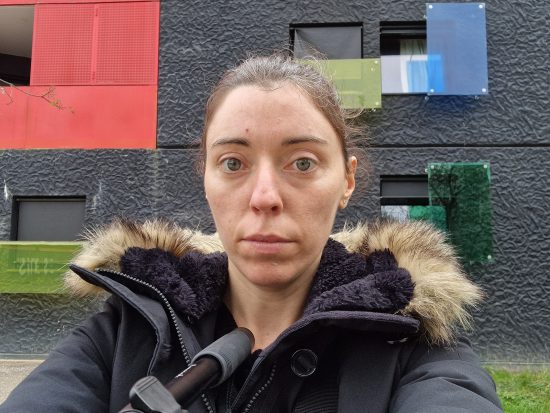


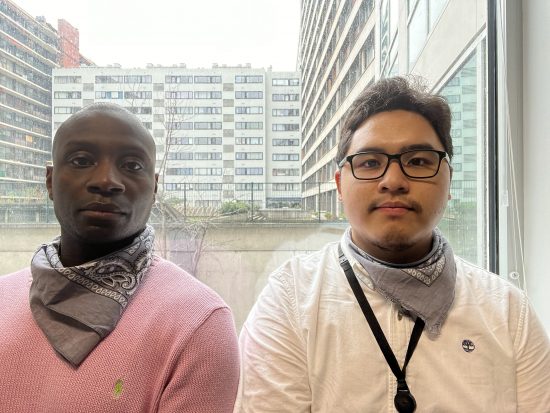
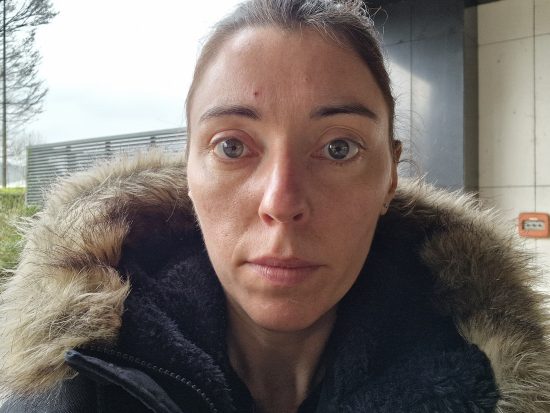
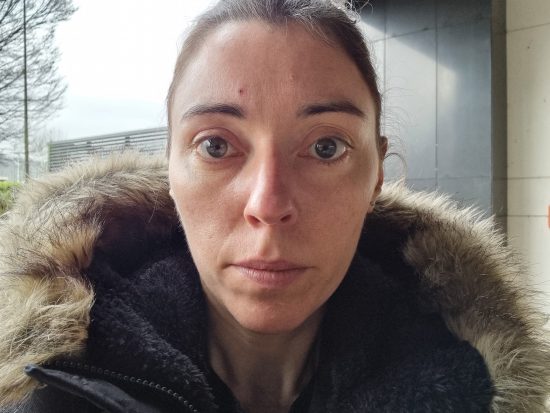
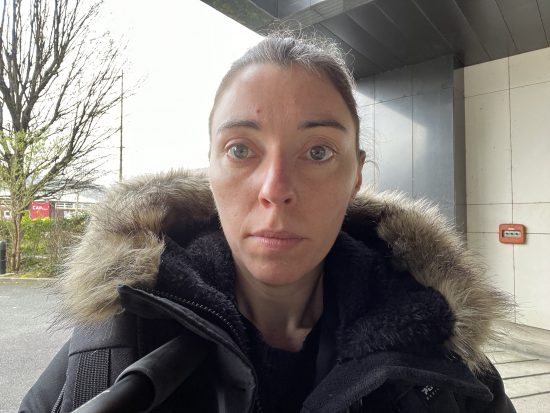
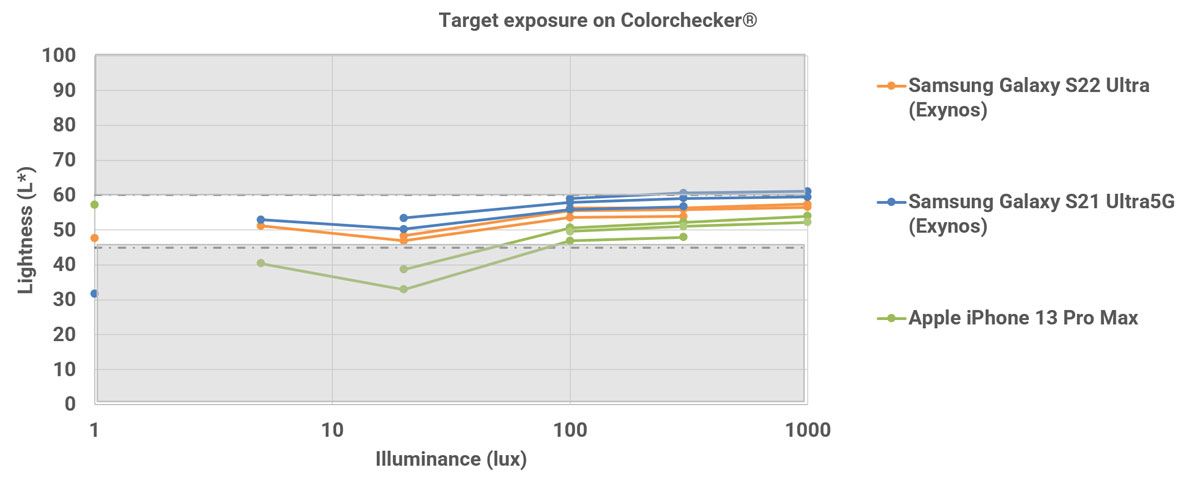
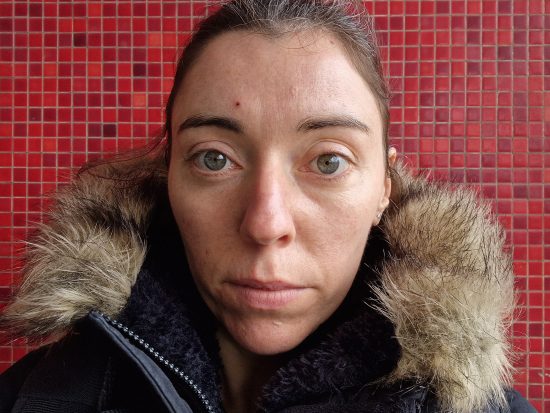
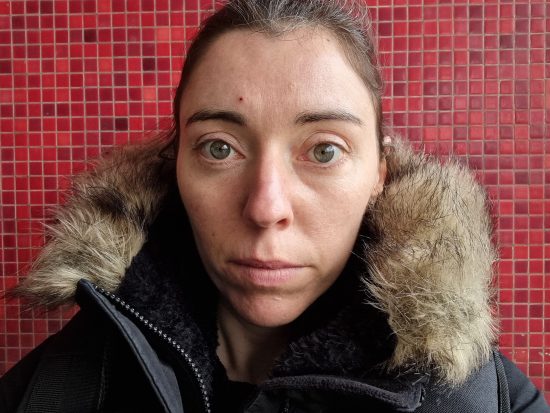
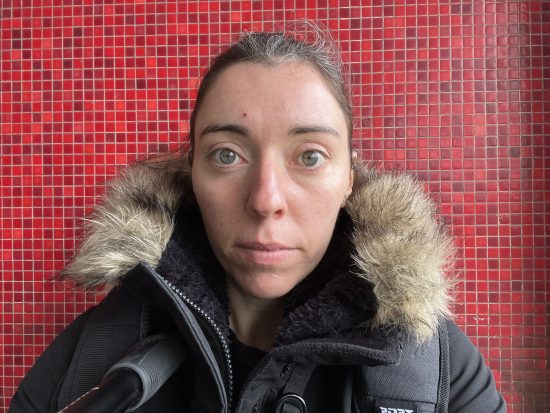


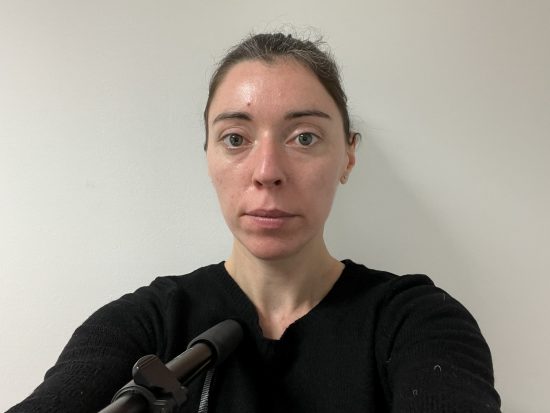

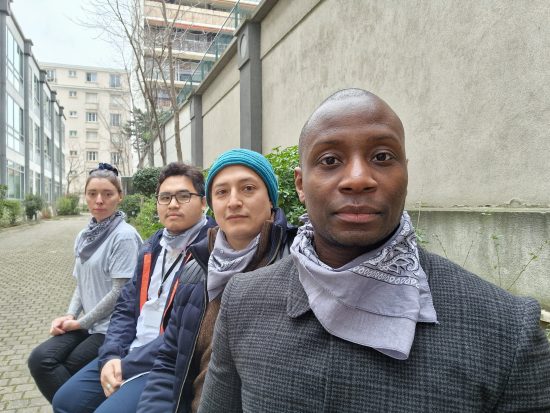
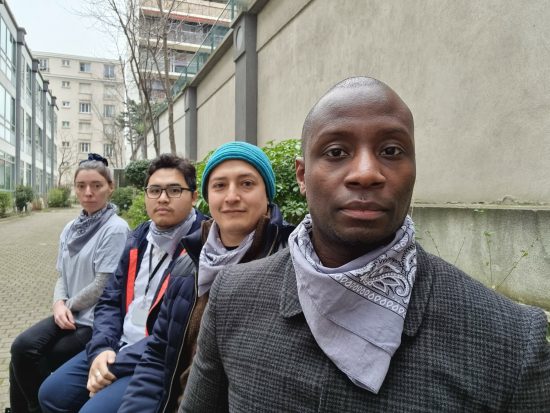
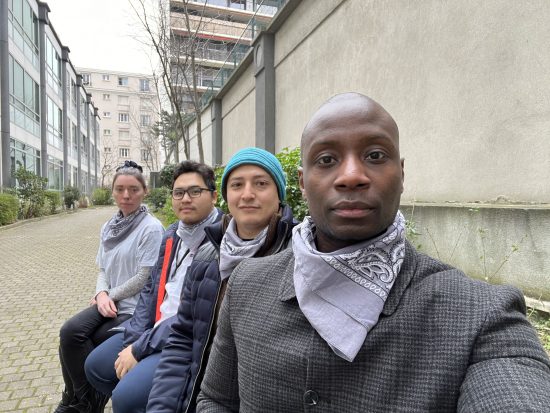

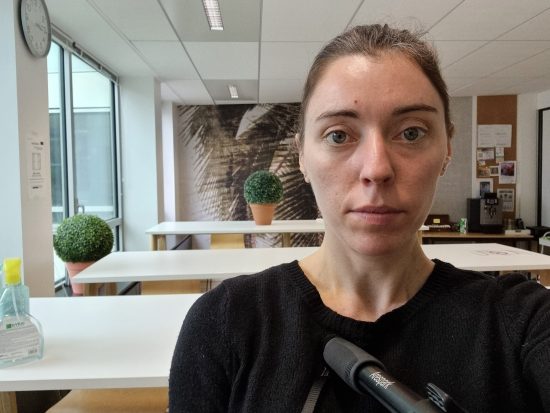
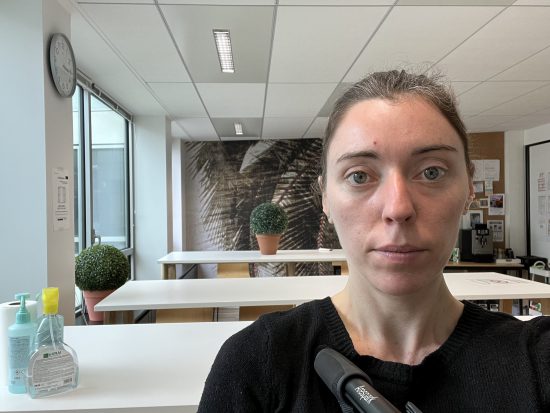



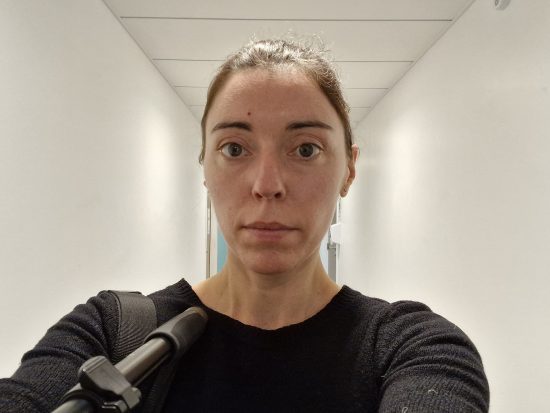

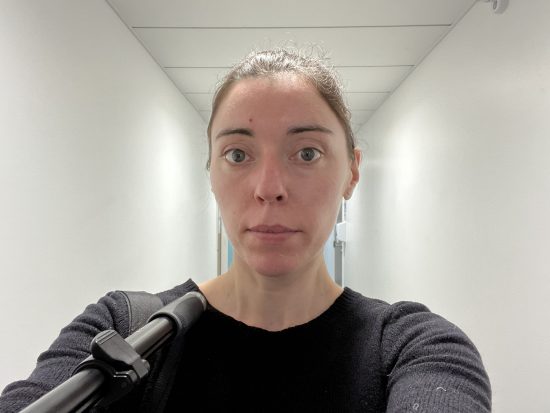
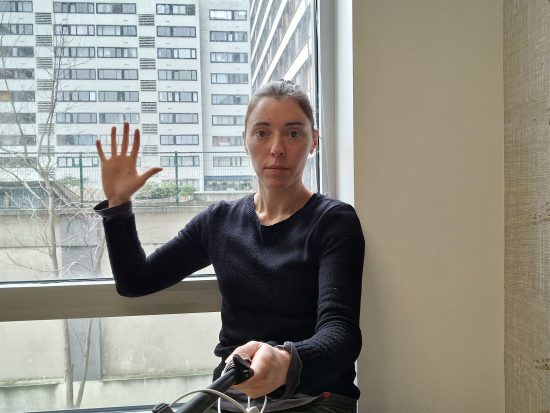

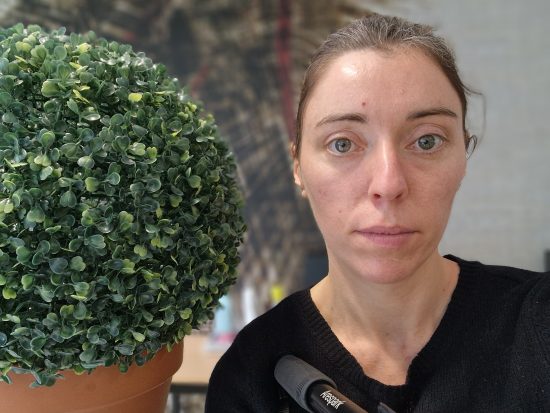
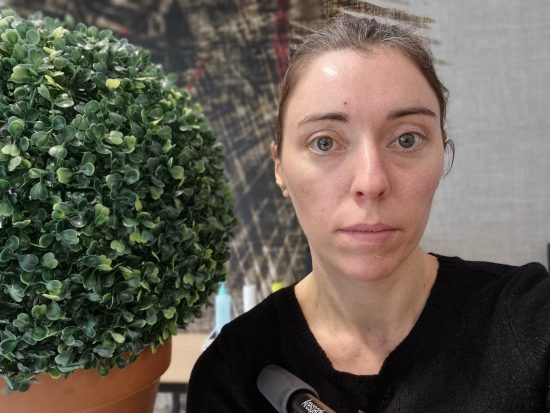
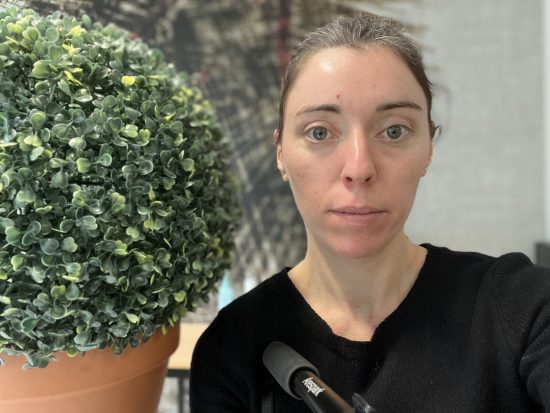

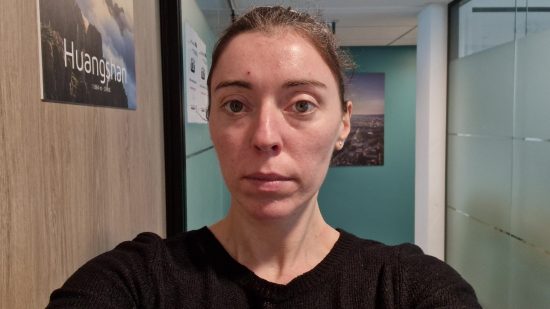

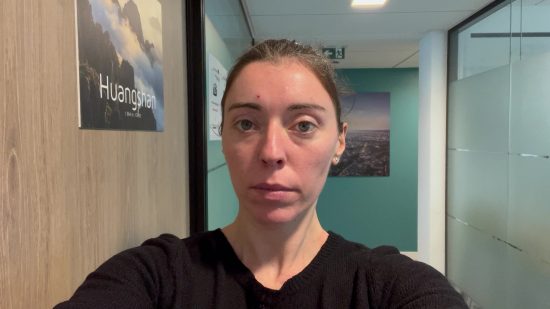
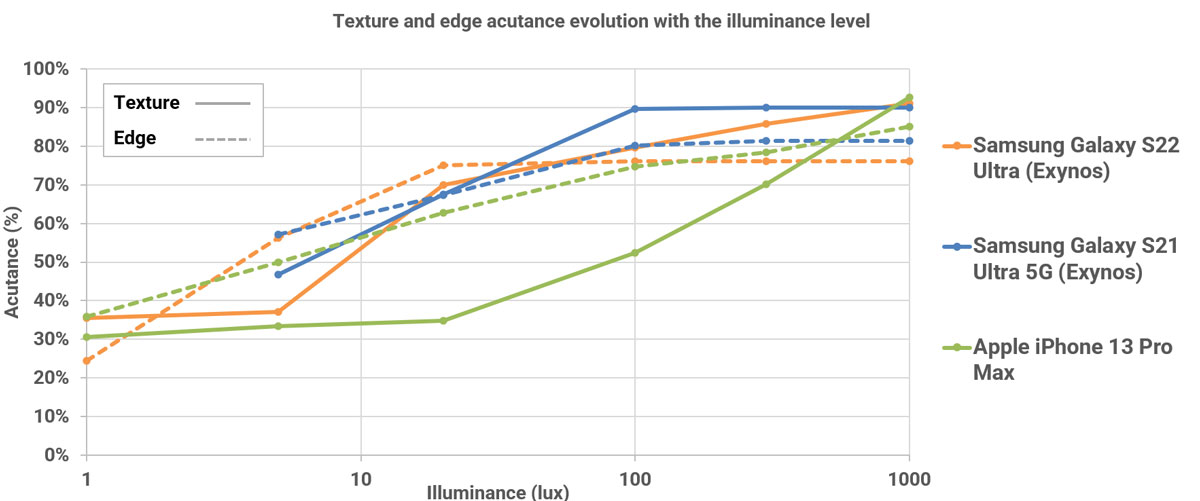

DXOMARK encourages its readers to share comments on the articles. To read or post comments, Disqus cookies are required. Change your Cookies Preferences and read more about our Comment Policy.